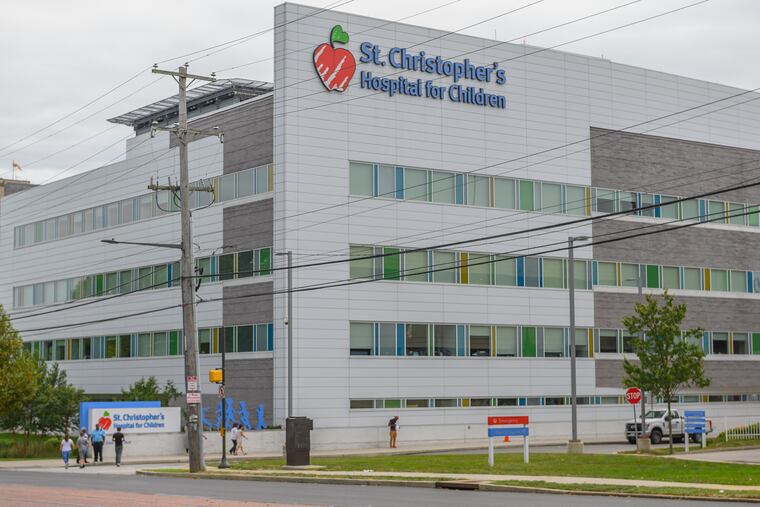Why Tower Health says it needed to buy St. Christopher’s Hospital for Children
Tower’s CEO says others may join it and Drexel in buying the North Philadelphia safety-net hospital.

Why Tower Health, with its home base just outside Reading in Berks County, wants to own St. Christopher’s Hospital for Children, in North Philadelphia, is not obvious to some of the bond analysts who track Tower’s finances.
“Is it problematic that it’s a good distance from your other hospitals?” John Kerber of Federated Investments wanted to know during Tower’s annual conference call on its financial results, echoing the concern of some St. Christopher’s physicians.
Tower chief executive Clint Matthews discounted that idea. “We’ve had many, many patients from Reading Hospital go to St. Chris over the years,” he said. The closest Tower hospital is nine miles from St. Christopher’s.
Matthews said the $50 million bankruptcy deal is expected to close in early December. Tower’s partner is Drexel University, though “we may end up having other partners that join us,” Matthews said.
Later in the call, Bill Delahunty of Eaton Vance pressed for more details on the rationale for the acquisition of St. Christopher’s.
Tower executives said there were two main reasons for the deal, which received final Bankruptcy Court approval Friday: Tower needed a pediatrics partner for the tens of thousands of children it sees in its emergency departments, and it needed a place for medical students and residents to train, according to Daniel Ahern, executive vice president for strategy and business development.
Tower, which undertook a huge expansion in 2017 with the acquisition of five hospitals from Community Health Systems Inc., tried to work something out with Children’s Hospital of Philadelphia and Nemours/Alfred I. duPont Hospital for Children in Wilmington, but was unable to form a partnership.
They “were restricted and unable to work with us in our market because of prior existing relationships,” Ahearn told the analysts.
CHOP is closely aligned with the University of Pennsylvania Health System and Nemours has ties to Jefferson Health and Main Line Health.
Tower has its own medical residents and has a new partnership with Drexel for a four-year medical-school campus in West Reading, near its flagship Reading Hospital. Residents and students were not going to be able to have rotations at CHOP or Nemours, and that made buying St. Christopher’s mandatory from an educational standpoint, Ahern said.
Of greater concern to the analysts than St. Christopher’s was how Tower planned to recover from a “shocking” $167.9 million operating loss in the year ended June 30 to reach profitability in the current fiscal year. The fiscal 2019 loss included an $86 million write-off of accounts receivable.
Among the factors Tower executives are counting to get into the black — with a narrow 1% operating margin in the fiscal year ending June 30, 2020 — is a $270 million increase in revenue from additional patients at its hospitals, higher rates from insurers, more revenue from doctors it employs, and other sources.
Tower had $1.77 billion in revenue in fiscal 2019.
The five hospitals in Chester, Montgomery, and Philadelphia that Tower bought for $418 million have been losing money and failed to meet Tower’s expectations in terms of patient volumes, but in at least one way they did better than anticipated for Tower.
In 2018, Tower was hoping for 450 referrals from its new hospitals to Reading Hospital, but got 750, Tower officials said. This year that number is expected to top 1,000. Those patients otherwise would have left the network for competitors’ hospitals, Tower said